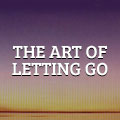OUR NEW STORY
By
Gillian Ross
“The destiny of the world is determined less by the battles that are lost and won than by the stories it loves and believes in.”
Harold C. Goddard
All cultures of all times have one way or another reflected on the mystery of their existence. These reflections have crystallised in the stories that are handed down from generation to generation about the birth and evolution of the universe and our role in its destiny. Our cosmologies, our stories about who we are and our relationship to each other, mould our consciousness.
Sacred stories once inspired the art and rituals of culture. They were the lamps that illuminated our existence. What we are now experiencing in Western culture is the end product of a gradual dismantling of any story which gives meaning to life in relationship with the cosmos. The prevailing scientific worldview tells us that we are isolated specks of accidental consciousness that have evolved out of an inanimate purposeless universe of matter. It is a story that tragically diminishes both ourselves and the cosmic mystery in which we live and move and have our being. We still have our religions, our places of worship, but they no longer address the questions about the nature of the universe and our place and purpose in it. That role has been appropriated by science. Even our philosophers seem to have abandoned any reflections on the awesome mystery of the bigger picture.
Given that over thousands of years the human psyche has been programmed to receive uplifting stories that resonate with our natural yearning for meaning, it is not surprising that this contemporary cosmological vacuum has been filled by the comforting crass messages of consumerism. As the buddhist monk Matthieu Ricard pointed out in his published conversations with his philosopher father Jean-Francois Revel “If spiritual values stop being an inspiration for a society, material progress becomes a sort of façade that masks the pointlessness of life”
It is a theme that is eloquently explored in cosmologist Brian Swimme’s book. The Hidden Heart of the Cosmos. (If only this book was compulsory reading on our high school syllabuses). In Swimme’s words, the central message of our materialistic culture is that:
Humans exist to work at jobs, to earn money, to get stuff………………..…It’s a simple cosmology, told with great effect and delivered a billion times each day , not only to Americans of course, but to nearly everyone in the planetary reach of the ad. ( 1996:16 )
Moreover, traditional stories were imbued with ethical guidance and re enforced community values and loyalties and a sense of belonging. In contrast, our cult of individualism and the new religion of consumerism re-enforce alienation and competition .
It has been said that consciousness now finds itself in a race against catastrophe (Roger Walsh). If consciousness is to win that race, Western culture has to find its center of gravity in a new cosmology- one that will inspire and enrich our children’s imagination and bring depth and meaning into their lives.
EVOLUTIONARY SPIRITUALITY
You take hydrogen gas and you leave it alone and it turns into rose bushes, giraffes and humans!
Brian Swimme
The story of our 14 billion years of cosmic evolution bequeathed to us by modern science is perhaps the most astounding discovery of the entire scientific enterprise. If we breathe sentience into that story by seeing consciousness, not inanimate matter, as the defining attribute of the universe we birth a new uplifting story for our time.
A story waiting to be told at this critical stage in our evolution integrates the discoveries of modern science with ancient mystical intuitions. This new story tells us that the universe is a living, evolving, endlessly creative numinous intelligence and that every atom, every cell, every living creature is a sacred expression of this sublime transcendent consciousness.
This new slant on evolution is taking wings across the planet as the philosophy of evolutionary spirituality.
The purposeful creative energy which transformed hydrogen into human is referred to delightfully by many spiritual evolutionaries (including our contemporary Einstein of consciousness Ken Wilber) as the “ Eros” of evolution because it is seen an being the dynamic love intelligence of the universe; the “love that moves the sun and other stars” (Dante) Brian Swimme speaks of “allurement” for the force of attraction that brings sub atomic particles together to form atoms, atoms together to form molecules, molecules to form cells and so forth – a dance bringing forth ever more complex manifestations of consciousness
Our modern Western worldview however see any suggestion that the universe may have qualities of mind like meaning and purpose as delusional . In every aspect of our lives we are conditioned in subtle and not so subtle ways to seeing the world around us as being composed of inert matter. We are taught to experience it as a separate entity, qualitatively different for our own subjective consciousness And yet, In the words of ecologist and philosopher David Abram, “ sentience was never our private possession. We live immersed in intelligence, enveloped and informed by a creativity we cannot fathom”
This new story requires nothing less than a Copernican revolution in our perception of ourselves and our relationship to the universe. Just as it took several generations for the enormity of the shift from an earth centred to a sun centred universe to take shape in our psyche it will doubtless take several generations for our minds to adjust to a consciousness centred universe. Even more challenging for our Western mindset is the shift to the understanding that the energies of this living universe are expressed through us. Each of us embodies the universe. Our evolution into self awareness plucked us from the cosmic vine. Our self reflective minds gave us the feeling that we are separate from the universe. We have been living in a self produced bubble of cosmic isolation (Tarnas). No wonder we needed to invent a God/father figure ‘out there’, who is looking after us in our isolation from the living whole. In the words of the wonderful Joseph Campbell : “ we are all, in every particle of our being, precipitations of consciousness; as are, likewise, the animals and plants”
When this new story is truly felt, it is an awesome insight but not a frightening one. On the contrary, it brings a lightness of heart because it awakens a sense of belonging. The pain of separation is transcended, not in fleeting mystical moments but permanently.
This brings us to a very important point. The transforming power of the messages of this new cosmology rests in it being embodied. Only then will it become the foundation for a whole new culture. For that to happen we have to do inner work that will heal the body/mind split of our Western heritage and help to thaw our illusory perception of the world as solid , permanent and independent of our subjective consciousness. The new cosmology is a story which, above all else, bridges the chasm in the West between the inner and the outer realms. This is its power. It will be impotent if it does not inspire and engage inner journeys into the mystery that is consciousness and awaken a connection with our Divine Source.
What we find within ourselves moulds our reality. We birth the universe and the universe births us. Outside and inside engage in a dance of mutual awakening. It is a dance that we are being called to participate in with greater awareness and joy as our new story finds acceptance and begins to fire our imagination. It will enable us, in Swimme’s words, to house the magnificence of the universe in ways hitherto undreamt of.
The Transcendent consciousness that birthed the universe has become aware of itself through the consciousness of the human. If we reflect deeply on that it means that it is our destiny to allow the intelligence of the universe to work through us consciously and creatively- not my will but Thy Will be done.
A NEW WAY OF RELATING
The work of the evolutionary collective is committed to creating a new paradigm for a higher order of human relating. Jeff Carreira
The most exciting and enriching aspect of our transition to our new story is the way in which it will impinge on how we relate to each other and the natural world. At the moment our egoic prison, fortified by a Newtonian “atoms in the void” story, is incapable of true intimacy. It is constantly on guard and inauthentic as an expression of our soul’s depths. Manipulation is always on its agenda. It is inevitable in an atomized and objectified universe that other people in our lives will tend to be treated like objects to be manipulated for our own comfort. The essence of our new connected consciousness on the other hand is empathy. It cannot help but connect with the Divine essence of everyone in a heart space of genuine intimacy. It does not suffer from the existential angst of separateness that has plagued us in the ego stage of the evolution of consciousness
There is within us all a deeply felt desire for profound intimacy. We yearn for sacred communion with others and the power of this communion of souls is enhanced beyond measure when the individuals involved share a commitment to a larger vision for humanity. This is surely what the famous 20th century pioneer of evolutionary spirituality Teilhard de Chardin was alluding to when he wrote:
“There is almost a sensual longing for communion with others who have a large vision. The immense fulfilment of the friendship between those engaged on furthering the evolution of consciousness has a quality impossible to describe.”
Christ said, “For when two or three gather in my name there I am in the midst of them.” ( Matthew 18:20) This famous biblical quote comes into its own with our new story. When two or more people come together inspired by and embodying the new story they create a field of sacred subtle energy out of which creative insights and Divine Love can flow. The potential for a world filled with such relationships is almost beyond our current imaginings. Indeed through the evolution of consciousness it may well be that our human mind is destined to become a universal cosmic mind.
Just as atoms once came together to form molecules, and molecules dance together to form cells and cells combined to become organisms so too is it not possible that a future humanity will be united in a global consciousness? The next great intermeshing will not, in other words, be physical but on the non-physical plane. The internet can be seen as a precursor of a spiritual technology that will bring about a quantum leap in consciousness. Humanity will become the mind of Gaia. But just as cells retain their unique function within an organism so too will each each of us retain our individuality. It will not however be the illusory separate identity that characterises egoic consciousness but an individulaity that flows out of our opening to ourselves as a unique drop of a Transcendent consciousness“ The universe is seamleass but not featureless” (Ken Wilber) One of the most uplifting elements of our new story is the understanding that each one of us has a unique and holy part to play in the unfolding drama of evolution.
THE COSMIC DANCE.
It is to be hoped that the current crises besetting humanity will prove to be a chrysalis for the transformation of human consciousness that is needed if we are to win the race against catastrophe. That transformation in no small measure rests on our embacing the new story of evolutionmary spirituality.
. It is a story which reunites matter and spirit, body and mind, nature and culture, psyche and cosmos. It celebrates our transition from the Age of Separation into the Age of Reunion. Above all, it rescues us from our incessant preoccupation with the soul shrinking trivialities of our consumer dominated psyche. The imperatives of evolution triumph over egocentrism.
The news that the universe is a living Numinous reality is the most liberating and illuminating message imaginable for a consciousness caught up in the straightjacket of materialism and locked into the prison of the ego. When we can actually experience ourselves to be a dance of energy, immersed in the music of an infinitely creative nurturing universe, we begin to resonate with the beauty of the universe, we begin to flow in the current of the Eternal Tao and tap into an ocean of psychic energy.
Cosmology, when it is alive and healthy in a culture evokes in the human a deep zest for life, a zest that is satisfying and revivifying, for it provides the psychic energy necessary to begin each day with joy. (Brian Swimme )
And this entry into the empowerment of our new story cannot be a purely solitary exercise. All too often spiritual work is seen as an individual activity, set apart from the “real” world. Evolutionary spirtuality is birthing a global worldview that encompasses every aspect of human endeavour transforming our capacity to love and to co-create. It is a call to fellowship, a call to celebrate the wondrous understanding that we all live in the same Divine womb.
Einstein famously commented that the significant problems we face cannot be solved with the same way of thinking that created them. Those “problems” are now threatening our survival as a species. Consciousness is in a race against catastrophe.. Or, in the words of popular guru Eckhart Tolle, “we have to evolve or die”. Our new story takes humanity a step up the ladder of evolution to a new level of consciousness that will transform our relationship with each other and the natural world. In the inevitable pain of transition, we can keep hope alive with the understanding that the creative impulse of the universe lies in the heart of each and every one of us and its signature is love.
.
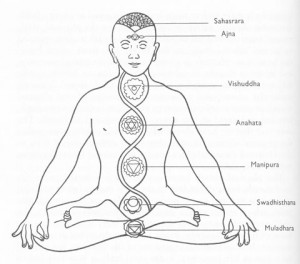 Acupuncture points (tsubos) can be understood as mini charkas. There are thousands of them on energy channels known as meridians that carry the life force (prana, or qi) to the vital organs of the body in much the same way as arteries and veins transport blood. Meridians can be experienced in deep meditation and often in yoga nidra, as fine lines of energy flow and can be felt by sensitive practitioners of shiatsu (finger pressure) massage.
Acupuncture points (tsubos) can be understood as mini charkas. There are thousands of them on energy channels known as meridians that carry the life force (prana, or qi) to the vital organs of the body in much the same way as arteries and veins transport blood. Meridians can be experienced in deep meditation and often in yoga nidra, as fine lines of energy flow and can be felt by sensitive practitioners of shiatsu (finger pressure) massage.
 The growing respect for Buddhism in our culture, which owes much to the popularity of His Holiness the Dalai Lama, is undoubtedly putting meditation on the mainstream menu of acceptable therapies. We are embracing it as a secular rather than as a spiritual practice but nevertheless we are at least beginning to acknowledge the power of the mind and this is a great plus for consciousness in its race against catastrophe.
The growing respect for Buddhism in our culture, which owes much to the popularity of His Holiness the Dalai Lama, is undoubtedly putting meditation on the mainstream menu of acceptable therapies. We are embracing it as a secular rather than as a spiritual practice but nevertheless we are at least beginning to acknowledge the power of the mind and this is a great plus for consciousness in its race against catastrophe.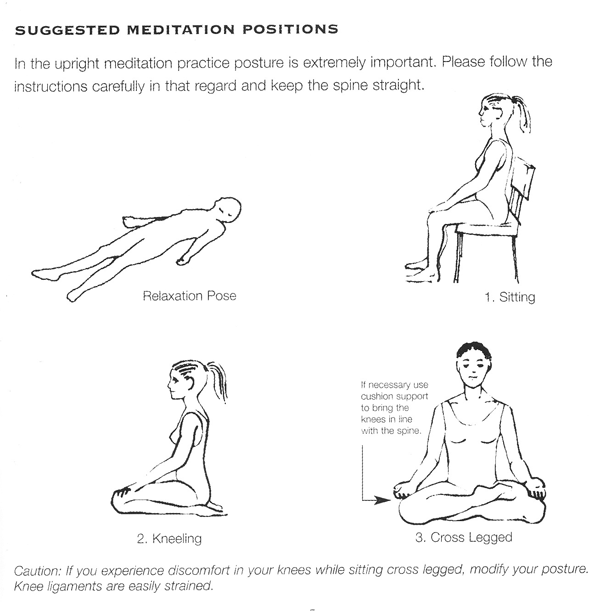
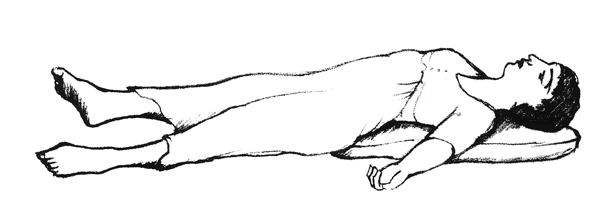
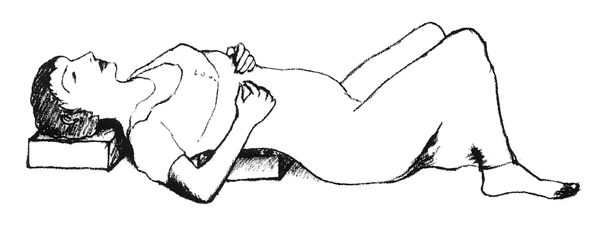
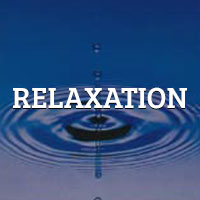





 sending...
sending...
